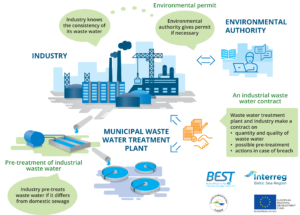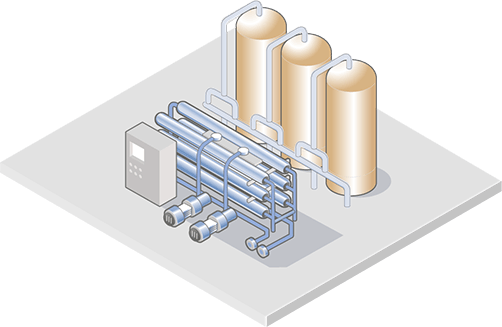Industrial Waste Water Treatment-- Comprehensive Solutions for Wastewater Disposal
Industrial Waste Water Treatment-- Comprehensive Solutions for Wastewater Disposal
Blog Article
Advancements and Advances in Hazardous Waste Water Treatment Technologies
The landscape of commercial wastewater therapy is undergoing a transformative shift, driven by innovations that enhance both efficiency and sustainability. As regulative requirements progress, the combination of AI and maker discovering right into wastewater monitoring systems assures to simplify procedures and make certain conformity.
Introduction of Waste Water Treatment Technologies
Wastewater treatment technologies incorporate an array of techniques developed to remove contaminants from commercial effluents prior to their release into the setting. These modern technologies are important for preserving ecological balance and making certain conformity with environmental regulations. The key classifications of wastewater treatment consist of physical, chemical, and organic methods, each offering unique purposes based upon the nature of the pollutants present.

Organic treatment methods utilize microbes to degrade raw material, making them especially reliable for organic-rich effluents. Techniques like activated sludge and biofilm reactors harness the natural deterioration capacities of microorganisms, leading to considerable reductions in biochemical oxygen demand (BODY)
Advanced Purification Strategies
Advanced purification techniques represent a crucial development in the world of commercial wastewater treatment, improving the effectiveness of pollutant elimination procedures. Industrial Waste Water Treatment. These techniques include a series of modern technologies, consisting of microfiltration, ultrafiltration, nanofiltration, and turn around osmosis, which supply consecutive obstacles for different bit sizes and chemical structures
Microfiltration and ultrafiltration utilize membrane systems to get rid of put on hold solids, microorganisms, and bigger organic molecules, improving the quality of effluent prior to more therapy. Nanofiltration connects the space between ultrafiltration and reverse osmosis, properly getting rid of natural substances and divalent ions, hence lowering the lots on downstream procedures.
Reverse osmosis uses the highest degree of purification by permitting just water and small molecules to pass via its semi-permeable membrane layers, making it optimal for reclaiming top quality water from commercial effluents. Current developments in membrane modern technology, including the development of even more long lasting and fouling-resistant products, have significantly boosted operational efficiency and minimized costs.
Including these sophisticated filtration methods not only boosts the overall therapy process yet likewise adds to sustainability efforts by making it possible for water reuse and resource recuperation in industrial setups. (Industrial Waste Water Treatment)
Biological Therapy Developments

In addition, the advancement of engineered organic systems, such as membrane bioreactors (MBRs), combines organic treatment with advanced membrane layer filtration. This assimilation enables for higher effluent top quality and decreased impact, making it appropriate for space-constrained industrial centers. Innovations in genetically crafted microorganisms have actually likewise arised, improving the biodegradation of details pollutants, such as drugs and heavy steels, that are typically testing to eliminate.
In addition, the application of bioaugmentation approaches, where Check This Out useful germs are introduced to boost the existing biological treatment procedures, has revealed encouraging results in boosting treatment performance. These technologies collectively symbolize a fad towards even more lasting and efficient biological treatment methods that can adjust to the developing intricacies of commercial wastewater streams. As industries continue to focus on ecological conformity, these biological developments will certainly play a critical role in wastewater administration.

Source Healing Methods
In commercial settings, the assimilation of source recovery approaches has come to be progressively important for boosting sustainability and lessening waste. These methods concentrate on extracting beneficial materials and power from wastewater streams, consequently changing prospective pollutants into multiple-use resources.
One prominent technique is nutrient healing, where nitrogen and phosphorus, often existing in excess in wastewater, are caught and exchanged plant foods. This not just decreases ecological impacts however also offers a round economy option for farming applications. Additionally, modern technologies such as anaerobic digestion enable the conversion of organic waste right into see this here biogas, a renewable resource source that can counter nonrenewable fuel source usage in industrial operations.
Moreover, progressed filtration and membrane layer modern technologies facilitate the healing of commercial byproducts such as metals and salts. These recuperated products can be rehabilitated right into production processes, minimizing the demand for virgin sources.
Future Trends in Waste Water Administration
As markets significantly focus on sustainability, the future of wastewater management is set to undergo considerable improvements. Technical innovations, such as artificial intelligence and machine knowing, will allow much more effective tracking and administration of wastewater systems. These innovations can anticipate upkeep requirements, enhance treatment processes, and enhance decision-making, inevitably decreasing operational costs and environmental impact.
Moreover, the assimilation of round economic situation concepts will certainly play a vital function in wastewater administration. Industries are expected to shift in the direction of systems that not just treat wastewater but also recoup beneficial sources, such as nutrients, water, and energy. This transition will certainly lessen waste and promote the reuse of materials, straightening with international sustainability goals.
Emerging therapy methods, such as membrane bioreactors and progressed oxidation procedures, will further boost the efficiency of wastewater treatment, permitting for greater quality effluents ideal for reuse. In addition, regulative structures are most likely to evolve, stressing stricter standards for wastewater discharge and motivating industries to take on ingenious treatment options.
Conclusion
In conclusion, the evolution of commercial wastewater treatment modern technologies demonstrates a significant shift in the direction of boosted efficiency and sustainability (Industrial Waste Water Treatment). Developments in sophisticated purification strategies, organic treatments, and resource recovery techniques highlight the market's dedication to ecological stewardship.
The landscape of commercial wastewater therapy is undertaking a transformative change, driven by advancements that boost both performance and sustainability.Wastewater therapy modern you can try these out technologies encompass a range of methods designed to remove contaminants from industrial effluents before their release into the environment.Harnessing the power of biological procedures has actually led to substantial technologies in the therapy of commercial wastewater.Furthermore, the application of bioaugmentation methods, where helpful microorganisms are introduced to improve the existing biological treatment procedures, has actually shown appealing results in boosting therapy efficiency. These developments collectively signify a fad in the direction of more reliable and lasting biological treatment techniques that can adjust to the developing complexities of commercial wastewater streams.
Report this page